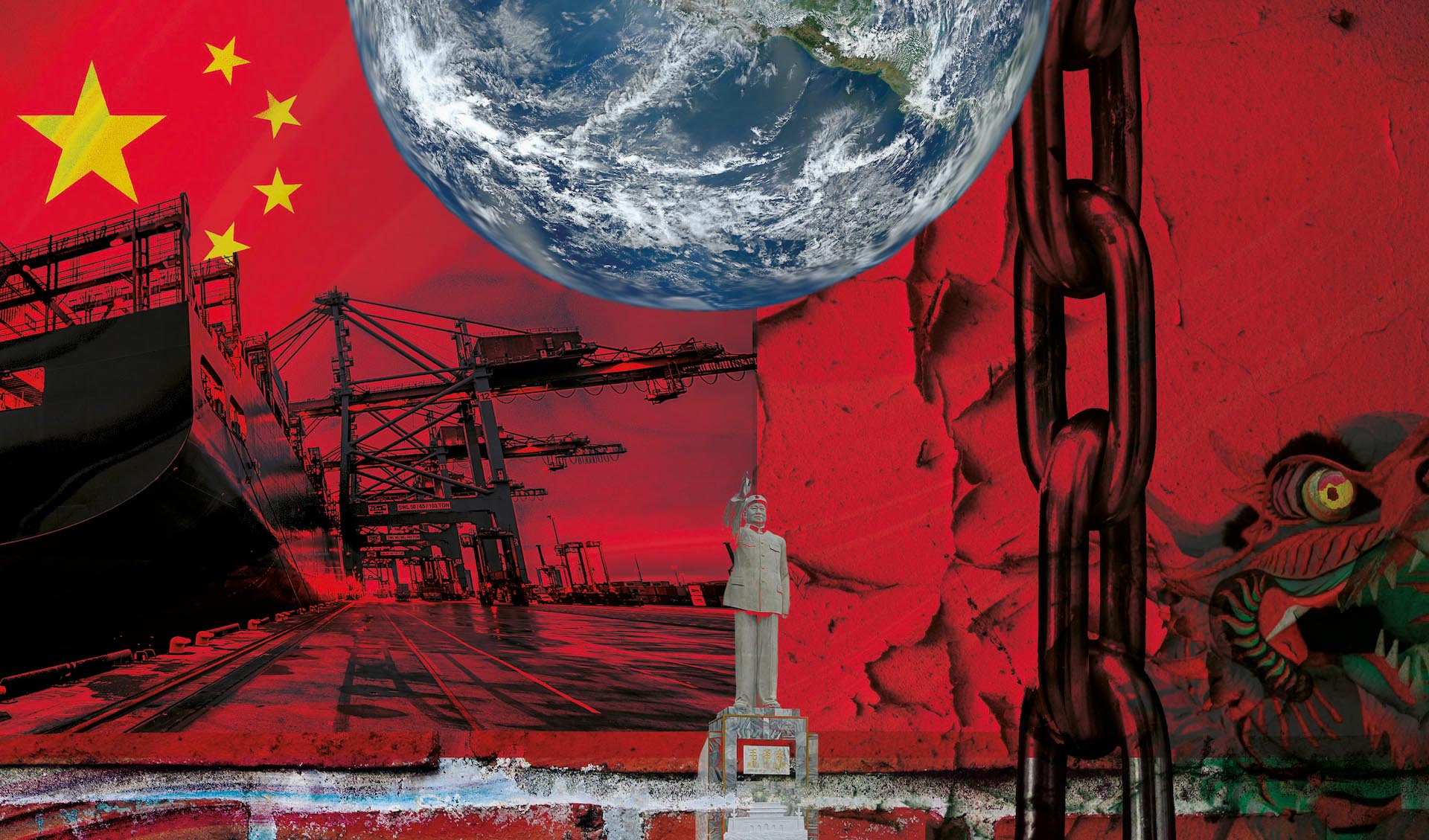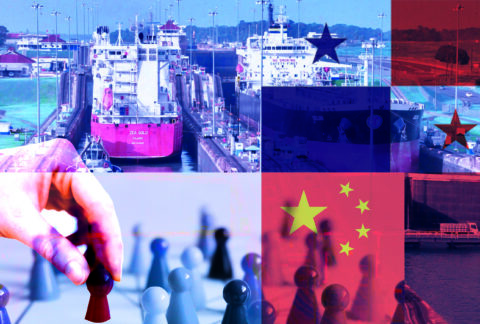The findings of journalist Agustín Barletti’s sweeping investigation on China
“China’s rampant penetration in Latin America is worrisome,” says Argentine journalist, writer, and editor Agustín Barletti after completing his most recent in-depth investigation: The Dragon’s Hunger. China’s Plan to Devour the World. After three years of study, and with an extensive record of sources, Barletti exposes the calculated feats of the People’s Republic of China (PRC) to conquer the world and raises alarms about the intentions of the Asian country in Latin America, a region he refers to as the mirror of Africa.

Barletti assures that the situation in Latin America is extremely challenging, because China has found in it a fertile ground to achieve its goals, and today it is the second region worldwide with the greatest Chinese penetration. Through a stealthy operation based on open wallets, says the expert, China feeds on natural resources, manipulates votes in international organizations, and observes as countries lose sovereignty while it gains dependence over them.
Africa, Latin America’s mirror
“China is hungry,” begins Barletti in a conversation with Diálogo. “It is hungry for challenging Western supremacy in various parts of the planet and to regain a historic place with the mandate of nationalism.” Barletti refers to the conquest China plotted to dispute the West’s leadership and thus become a world power through absolute control of countries’ geopolitical decisions. “The objective is that future decisions cannot be taken in a sovereign manner without consulting China’s wishes,” he adds.
And to achieve this task China bet on loans. “Everything starts from economic proposals,” says the journalist, who is also a lawyer and an expert in public law, adding, “it’s about lending money to countries in distress, but with the characteristic that they do not pay it back.”
A Chinese experiment that began in Africa. “That’s the finished model,” Barletti says. “China has used this continent as a kind of laboratory for its colonizing model that has been successful. Now it seeks to repeat its feat in other continents, such as Latin America.”
For Barletti, Africa, faced with the desperate need for investment, buckled to become a continent dependent on China. “Today 50 percent of major African construction sites are controlled by thousands of Chinese companies,” Barletti says. “It is no coincidence, then, that Africa’s public debt hasn’t stopped growing.” In his investigation, the journalist reveals that since 2000, Africa’s public debt has risen from 35 percent of its GDP to 50 percent, and that China is its main creditor. In addition, other worrying data from the World Bank in 2020, indicate that seven African countries face debt difficulties due to the volume of Chinese loans.
This alarming situation, according to Barletti, is being replicated in Latin America. “Africa must be watched, it’s the mirror of what is going to happen in Latin America if Latin American leaders do not put the brakes on it.”
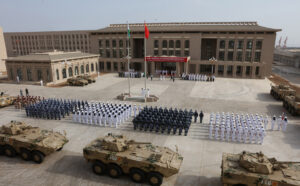
Power with an open wallet and usury
Since the beginning of the century, the world has seen how the economic and political importance of the PRC in Latin America and the Caribbean has continued to grow. The increase in economic and trade relations between the Asian country and Latin America has been constant, to such an extent that China has gone from being insignificant in the economy of the countries of the region to being today the second largest trading partner. But the big question to be answered is, how has it achieved this in such a short time, what are its interests, and what are the benefits of such a close commercial relationship for the region that is the farthest away from the Asian country and so different politically and culturally? “None,” Barletti answers without haste.
The journalist says that China’s penetration has been marked by a stealthy strategy based on what he calls, “open wallet.” He refers to China as the region’s usurer, having become an emergency lender to countries that have the most difficulty in accessing conventional loans, promising them money, and inviting them to take part in the Belt and Road initiative, which was designed to acquire economic and political predominance at the global level.
According to Barletti’s research, 60 percent of the countries that make up this initiative have what is called junk credit. “That is to say, they do not have access to multilateral credit agencies,” the author says, adding that, “when Beijing proceeds as an alternative lender it is not interested in the legitimacy of the government, nor its capacity for financial return, because in the end what it’s looking for is not to be paid.”
What Barletti refers to is the debt trap as China’s strategy to gain political influence and economic power. “Through debt China ties countries to influence positions or determinations that lead to the loss of sovereignty.”
Influence vs. money
This is how Latin America has become the region’s puppet, Barletti says, citing multiple examples of China’s open wallet manipulation to achieve its purpose.
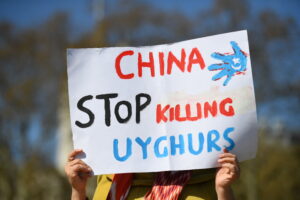
One of them was the lack of support democratic countries received in 2021 upon sending a delegation led by Michelle Bachelet to request an investigation and condemnation of China for its violations against the Uyghurs Muslim minority and detention centers in Xinjiang. “China was not condemned because several countries in South America and Africa voted in its favor […].”
Another of the serious allegations made by the journalist, is illegal fishing. “It’s an army of ships built in state shipyards, with Chinese crews, which also receive state subsidies for fuel, and construction of new ships, and support from the People’s Liberation Army to locate fishing grounds,” the expert says. Every year, he adds, these fleets depart from China, cross the Pacific, and settle off the coast of Mexico, Ecuador, Chile, cross the Strait of Magellan, and for four months anchor on the outer limits of the Argentine Sea in search especially of squid, the most prized fishing resource of the South Atlantic.
According to a report by conservationist nongovernmental organization Oceania, between January 2018 and April 2021, satellite data showed that 400 Chinese vessels have continuously plundered the waters off Argentina. Illegal fishing is also pillaging marine life, and has a high environmental impact, but of which the most affected countries speak little of. “There is no firm attitude toward this delicate situation because that would mean fighting with China and they will lose more if China cuts off their money.” Barletti also warns about the geopolitical power projection of this illegal activity. “China’s fishing fleet is more than a commercial concern, because through it Beijing has also been strengthening its naval presence and claiming precious maritime routes.”
Another example that the author presents is the port of Chancay in Peru, of which China is the largest shareholder. “A mega port is being built that is violating all environmental norms and no one raises their voice, or the few that do are small environmental organizations that complain about the ecological disaster that is being done by a port without any environmental foresight, which is not only destroying the environment but also an entire people and why? All because the Chinese wallet is very strong and the country where China has penetrated the most in Latin America is Peru.”
According to the China Index 2022, an initiative of the Doublethink Lab research center, which ranks China’s penetration in the world, Peru is the Latin American country with the greatest influence and the fifth among the 82 countries evaluated globally.
Loss of assets and dependence
The weight of influence that China has gained through exorbitant loans can be very costly for recipient countries, which, according to Barletti, will pay a high price in terms of loss of assets and dependence. Case in point is the railway industry says Barletti. “China disburses money so that countries buy their trains from China, so that they buy rails from China, so that the countries are then stuck buying all the spare parts in their country and so that, in addition, Chinese personnel come to do maintenance and repairs. So it’s not that China is lending to countries to modernize railroads, but to help China finance its rail industry because otherwise, would they be able to buy trains in Belgium from the money China lends them? The answer is no.” And he goes on to give concrete examples. It’s “a situation that is happening in Argentina with the railway system, in Santiago de Chile with the Metro, the same that is going to happen in Bogotá, and that is already happening with the Mayan train in Mexico,” he said.
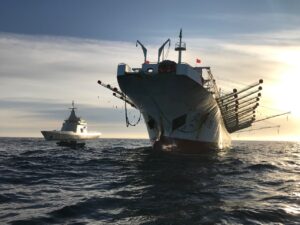
But China’s interest is not only through investments in infrastructure, it also creates dependence in the various input industries and natural resources that export to China. “An example of this is what is happening in Argentina with soybeans, 80 percent of soybean production, its flour, oil, all its products are exported to China, and today China has already bought companies in Argentina that have ports, that have oilseed processors, so that 20 percent of Argentine soybeans already come from Chinese companies based in Argentina.”
As for taking over assets, the classic case of what is called the debt trap, a clear example of what could happen in the region is the port of Sri Lanka. Despite feasibility studies concluding that a port in the city of Hambantota would not be profitable, the Sri Lankan government accepted a more than a $1 billion loan from Beijing for the construction of the port on one condition. “The same as always,” says Barletti, “that the Communications Construction Company [CCCC] group, one of China’s largest state-owned enterprises and the Chinese Communist Party’s enforcement arm in the world, build it.” But the project failed and Beijing cashed in. “It foreclosed and Sri Lanka ended up ceding the port operations to China for 99 years; now China is making a naval base there and warships are already arriving. That’s their business,” Barletti said.
In Ecuador the situation has been similar. The Coca Codo Sinclair hydroelectric plant, the most important infrastructure project in the history of this country, was built by a Chinese company and today has countless construction flaws. “It does not even work at 12 percent capacity and China wrote off part of the debt in exchange for the 30-year concession. In other words, China generates the electricity and sells it to Ecuador.”
Loss of sovereignty
Perhaps of all the risks enumerated by Barletti, the loss of sovereignty is the most worrisome. “This is already the tipping point,” says the author. Latin America has ceded spaces to China that will be difficult to recover, such as the land where the 11 satellite tracking bases that China already has in the region are located. “These bases are managed by the People’s Liberation Army where countries, owners of sovereignty, cannot enter without authorization.” According to Barletti’s research, they are bases for espionage. “From there, China watches everything that happens in the satellites orbiting Latin America and the Southern Hemisphere.”

Surveillance and the end of freedoms: the greatest threat
Among China’s chilling maneuvers to fulfill its plan for world dominance, as revealed by the author, espionage is a high priority. “China advances through surveillance as happened on February 4, 2023, with a spy balloon that flew over the United States, Colombia, and Peru.” Its controlling eye — as the journalist says — extends beyond its borders, and through various tactics, China manages to monitor its citizens in exile and the countries where it has penetrated. “It does this through clandestine police stations,” Barletti says. According to his research, data from international organization Safeguard Defenders, there are secret Chinese police stations in South America in Quito and Guayaquil, Ecuador; Viña del Mar, Chile; Rio de Janeiro and São Paulo, Brazil; and Buenos Aires, Argentina.
But it also does so, according to investigations, through its companies, such as Huawei, for instance. Barletti’s research reflects that all Chinese companies of more than 500 people are required to have a Communist Party member on their board of directors, but not only that, by law any Chinese company is required to provide all the information it collects to the Chinese Communist Party, and this applies to all types of companies, including technology companies. “This is what should be worrying authorities the most: The fact that China seeks to transfer threats to individual freedoms, to the region, so that no country can make sovereign decisions, without first consulting with the Communist Party, is very serious,” Barletti says.
End of anesthesia?
Although Barletti’s overview is bleak, the journalist assures that China is in a relative decline of power. “The tipping point was COVID-19,” Barletti says, convinced that the pandemic opened the world’s eyes. “When China shuts down, the world economy strains, and alarm bells go off because they realize how dependent all countries were economically on China.”
Since then, Barletti says, countries have started to take concrete and joint actions to stop China’s plan that they wouldn’t have until then. Case in point is China’s conquest of the seas. “The last big move China attempted was the purchase of the commercial port of Hamburg, the largest and most important in Germany and third largest in Europe, but pressure from the United States and Germany prevented the near 100 percent purchase and in the end they agreed to 24.9 percent, but with a condition of prohibiting any acquisition above the 25 percent threshold and giving themselves the right of veto.” China went from strategic participation, with a blocking minority, to a simple financial participation.
To this push back is added another even more powerful one, that of the technological cold war. “Whoever controls the semiconductors is going to dominate the world,” says Barletti, adding that China is already in a hurry to achieve this battle where minutes are worth gold. “In Holland, there is a factory that is the only one in the world that produces a minimal but necessary part for the most advanced microchips in the world and had a signed agreement with China, however, pressures from the West made Holland rescind the contract and China is going to be three or four years behind.”
These are just some of the direct actions being taken against China’s power. Reactions are also taking place in Africa. “After almost half a century since the Chinese landing, this continent is waking up,” Barletti says. “Xi Jinping’s wish for the African example, based on infrastructure financing, to be the mirror where developing countries can see themselves reflected, seems to come apart.” Among some of the actions the author mentioned are complaints made in February 2023 by the Democratic Republic of the Congo against Beijing’s breaches of an agreement signed for the development of infrastructure in exchange for the exploitation of Congolese minerals. “Although they have paid dearly for it, they are already reacting,” Barletti adds.
While there are countries that have become more aware, there are others that remain dormant, such as Colombia, the author warns. “China saw in Colombia a country where there is little or no awareness of the Chinese danger,” the expert says, adding, “I don’t see an alert in Colombia, no one is raising their voice about what is happening and China is going to take advantage of this situation, without a doubt.”
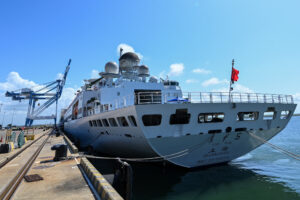
Putting the brakes on China
But Barletti does not seem worried about the numbness in which some countries remain in the face of China’s penetration, as one would expect, because he has his own prediction. “It’s not that they will not succeed because the world is going to stop them, but that their autocratic regime together with the economic decline they are experiencing will be the blood where this project will drown.”
The author refers to the economic crisis that China is undergoing, from an 8 percent growth down to 3 percent. “It’s a catastrophe,” he says. Added to this is an aging population, factories and entrepreneurs who are leaving, and a great distrust of construction companies, which the author assures will cause serious internal problems that will put China between a rock and a hard place. “In 1980, after the massacre in Tianamen Square, the Chinese people gave up their freedoms in exchange for economic benefit, so numb were they that not even a whiff of the Arab Spring reached them. The problem now is that they are not even going to have that because the Chinese economic crisis is hitting everywhere and the people are going to rise up,” Barletti says.
Barletti’s prognosis, after more than three years of research, is that China’s plan to become the world’s leading power could come to nothing. He is concerned about the extent to which this situation will affect Latin American countries that are so dependent on China’s economy. “China will begin to walk a tightrope and will have to decide whether to foreclose and sink the countries of the region or maintain political influence and continue to throw lifelines, but leaden lifelines, because in the end they will sink,” Barletti says, concluding this warning reflection.

